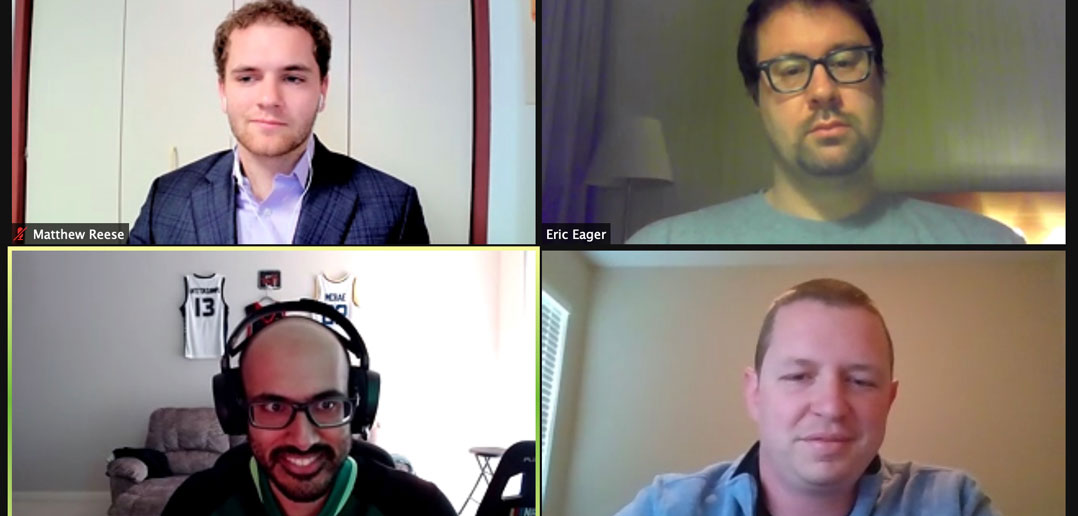“We’re celebrating this anniversary with a dynamic and timely program,” said Mark Conrad, associate professor of law and ethics at the Gabelli School. “We began 10 years ago in a very small room, and now we’ve been on Zoom the last two years and we draw present students, alumni, and guest speakers from all over the country.”
The event featured several Fordham graduates working in sports business fields. Conrad also announced the launch of a new Gabelli Sports Business Initiative, which aims to bring sports professionals together to discuss these cutting-edge topics.
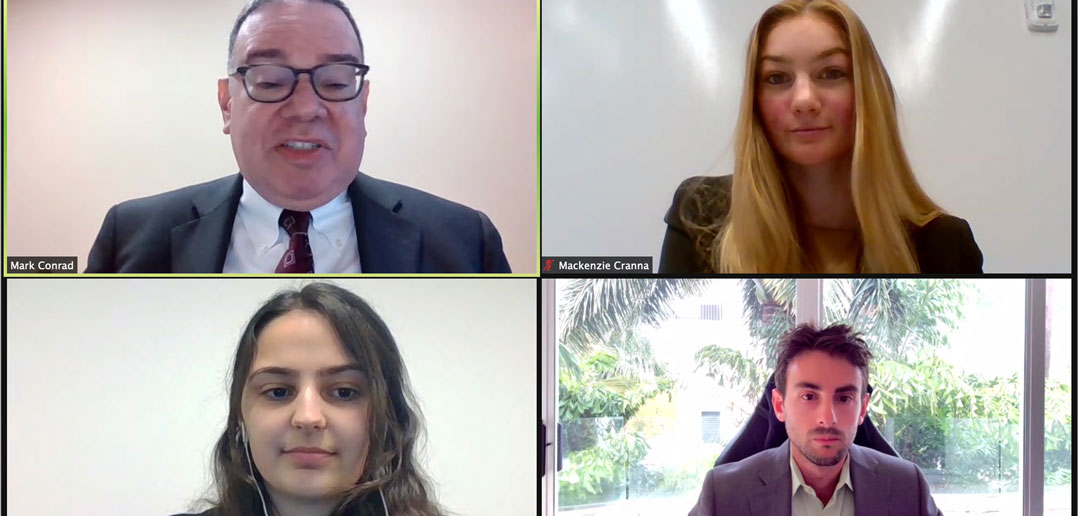
Name, Image, and Likeness for College Athletes
After California and Florida passed laws allowing college athletes to sign sponsorship deals and earn money for the use of their name, image, and likeness—and after the Supreme Court issued a 9-0 ruling in a related case—the NCAA began allowing students across the country to do the same thing.
Keynote speaker attorney Darren Heitner, the founder of Heitner Legal, P.L.L.C., and adjunct professor of Sports Law at the University of Florida Levin College of Law, helped write the name, image, and likeness law that passed in Florida. While Heitner often works on deals with high-profile college athletes, this year, he noted that other athletes have been able to take advantage of their moments.
St. Peter’s Doug Edert: A Win-Win Deal
“When St. Peter’s had its amazing run, and everyone was talking about Doug Edert, Buffalo Wild Wings did a deal with him,” Heitner said. “It’s funny that he could not have received it prior to July 1 and I don’t think we’re gonna be talking about Doug for the foreseeable future—I don’t think he’s going to have a career in the NBA, yet it was a win-win for both sides.”
Conrad asked Heitner if in the future he thought student-athletes would try to take this a step further and work to get a contract with their university, essentially becoming employees of the institution. Heitner said he wasn’t sure if that was the best thing for them.
“I wonder whether it opens up a can of worms for athletes,” he said, noting that this could lead to questions, such as whether they were considered at-will employees. “I do think we are getting closer to an ecosystem where athletes are sharing in the revenues of their universities or perhaps the conferences.”
Diving Deeper into Analytics for ‘Smarter’ Fans
Sanjay Pothula, a research and innovation analyst with the Milwaukee Bucks who graduated from the Gabelli School of Business in 2015, said that he tries to stay on top of the latest in analytics by looking at sports other than basketball.
“I’ll try to see—are there ways that people are thinking about things differently? Because a lot of times, when you’re looking at your analysis in your own sport, sometimes … everyone has the same ideas about a similar topic,” he said. “And sometimes you just want to kind of get out of that and see ‘is there a new way to think about things?’”
Pothula said that Fordham helped connect him to internships in sports that gave him experience for his career.
“The great thing about Fordham was that there were a lot of people in different sports,” he said. “There especially were a lot of connections in baseball—(being) part of the Business of Sports Society at that time…it kind of gave me a realization of what I can do and what opportunities were out there.”
Pothula was on a panel with Caleb Shreve, the head of analytics for Orlando Soccer Club, and Eric Eager, vice president of research and development at Pro Football Focus, a sports analytics company that focuses on the NFL and NCAA football. Eager said that his company has had to adapt to a changing market of not just serving the teams and media, but also serving the fans who want detailed data analytics.
“It’s undeniable to me that the average sports fan and the average person who works in sports is just a lot smarter than they were 10 years ago,” he said. “You have fantasy football, sports betting, which is exploding—the average consumer of the game just has skin in the game more often than they did before, and they’re getting smarter.”
Using Influencer Content on Social Media
Emily Martin, manager of paid social marketing for the NBA and a 2018 graduate of the Gabelli School of Business, said that in her role she has to stay on top of the latest trends and ways people connect on the different social media platforms. For example, TikTok in particular, has a different style than previous social platforms.
“You really have to be more native in the platform because the users are highly sensitive to any sponsored content or anything that looks fake or inorganic,” she said in a panel discussion that also included Douglas Bennett, a senior manager of partnership marketing for NYCFC who and received his master’s in strategic marketing communications from the Gabelli School in 2020.
“So a strategy that we’re trying to utilize there is rather than using our paid content, which is huge, the best way is to try to get some influencers involved and boost stuff that has already been posted organically.”
Martin said that Fordham helped her take what she learned and put it into practice.
“I think that Fordham does a great job of really giving that hands-on experience,” she said. “To be able to really take in other sports marketing classes and business it helps you really develop that interest. And then, of course, the club and the concentrations really encourage you to get out there, get a sports internship.”
]]>We connected with some of the countless Rams bringing people together to repair and lift up their communities.
A Pro Runner Blows the Whistle on Abusive Training Culture
In 2013, at age 17, Mary Cain was one of the top runners in the world, the youngest U.S. athlete ever to compete on a World Championships team. But soon after joining Nike’s elite Oregon Project to train with head coach Alberto Salazar, her health and her promising pro career deteriorated.
Her coaches forced her to lose weight, which led to the loss of her period for three years and stress-related injuries, including five broken bones, Cain said.
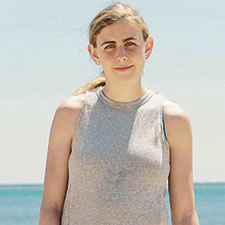
“You don’t go from losing weight to breaking bones in two days, right? There’s usually this long period of time where there’s this physical deterioration,” Cain said at Fordham’s ninth annual Sports Business Symposium, held virtually on March 25. “Throughout the day, I just was more prone to having silly things, like headaches, to just being more hungry, to being a little bit more irritated as a result, and to just being visibly fatigued.”
She began to dread the sport she had loved since fifth grade. Her physical, emotional, and mental health began to spiral downward. She developed an eating disorder and began to cut herself and have suicidal thoughts.
“What once had been something that came naturally to me, this beautiful experience … suddenly became a slog,” Cain said. “The longer that I was in this really circular system, the more my body broke down.”
Cain completed one year at the University of Portland while training with the Oregon Project before transferring to Fordham’s Gabelli School of Business, where she earned a bachelor’s degree in 2019. After moving to New York, she kept training with the Nike project until 2016.
In a November 2019 video piece for The New York Times, Cain said the all-male coaching staff, led by Salazar, did not include a certified sports psychologist or certified nutritionist, and that Salazar had tried to put her on birth control pills to lose weight and harmed her mental health by berating her and humiliating her in front of her fellow athletes.
“Women in sports are treated harsher when it comes to body image,” she said during the Fordham symposium in March. “And I believe the reason is mostly societal—the expectation to be a lighter weight is more attached to [women’s] looks and their meaning. And it’s this really toxic culture that I think permeates professional sports.”
After Cain’s story came out, many other women supported her claims, including Kara Goucher, an Olympic distance runner who had trained under the same Nike program. Salazar denied the allegations of abuse, but several weeks before Cain’s story was published, he received a four-year ban from the sport for doping violations, and Nike had already shut down the Oregon Project.
In January 2020, Nike completed an internal investigation of Cain’s allegations of abuse, and her story helped Nike identify initiatives to “do better in supporting female athletes,” including increasing the number of women coaches in sports and investing in scientific research into the impact of elite training on women and girls.
Today, Cain is the New York City community manager for Tracksmith, a running apparel company. She runs professionally as a member of USA Track & Field and continues to call for reforms, including having teams provide mental health counselors and sports psychologists who are separate from the coaching staff.
She said her goal in sharing her story is to make sure that no other athletes, particularly female athletes, have to go through the suffering she did.
“I hadn’t known that the situation was bad until somebody [told me], ‘That is bad. That shouldn’t happen to you.’ It’s normalized,” she said.
“I realized I didn’t want any other person out there to … be self-loathing, beat themselves up, and have this incredibly negative experience because they were under an emotionally abusive coach and almost didn’t know it.”
—Kelly Kultys, FCRH ’15
A Gun Violence Survivor Works to Heal Social Divisions
Lamont Young knows something about forgiveness and bridging interpersonal divides.
In 1993, he almost died after being shot seven times in the chest—point blank—by an acquaintance who was high on PCP. But he later found the strength to forgive his assailant, and in doing so, he was inspired to pursue a lifelong path of helping others.
That path eventually led him to the Graduate School of Education, where he earned a master’s degree in mental health counseling in 2018.
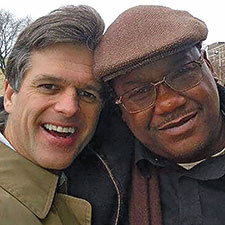
Then he made a career move that led to a personal transformation. He went to work with UNITE, a national initiative co-founded by Special Olympics Chairman Timothy Shriver that seeks to help Americans overcome divisions, and he gained a new perspective.
“I went in with this psychological approach to addressing the human condition and suffering caused by racism and discrimination. I had a burning desire to promote human dignity and shed light on segregation and dehumanization, but I was so caught up in my head trying to find ways to address this,” he said.
“Once I met with the UNITE team, I had a spiritual awakening. I started to address them not from my mind or from my heart, but from my spiritual background. It was transformative to understand that in spite of it all, we have to love, we still have to forgive.”
Young and his mother, Glenda, are featured in The Call to Unite: Voices of Hope and Awakening (Penguin Life/The Open Field), published in March. The book contains an interview with them conducted by Shriver, who knew Young from a young men’s group he once led in New Haven, Connecticut.
“A mother who raises a son who can take on the hardscrabble and often fatal streets of New Haven and not only come through it but come through it with forgiveness and an open heart—that’s a mother I want to learn from,” said Shriver, who spoke about the power of personal transformation at Fordham’s 2019 commencement ceremony, where he received an honorary doctorate.
Shriver said the book’s common thread is that when we treat ourselves and others with dignity, we unlock potential, even during disagreements.
“This is hard emotional, spiritual, political work,” he said. “If you want a quick solution, this is the wrong place. But if you want the best solution, there’s only one way, and that’s to unite.”
In addition to conducting research on dignity and respect for UNITE, Young works with people experiencing homelessness in New Haven at Columbus House and provides psychotherapy at Reliant Behavioral Health Community Service.
And he has learned about some new dimensions of forgiveness. “You can transgress against yourself by not forgiving yourself for some of the things that you haven’t done or some of the time you haven’t spent with your loved ones before they left this Earth,” he said. “I found that very powerful, to understand how to love and forgive yourself in the midst of turmoil and grief in order to free yourself.”
—Patrick Verel, GSAS ’15
A Nonprofit Leader Rescues Food Waste to Relieve Hunger, Promote Community
As the president and CEO of Community Solidarity, Jon Stepanian runs the largest vegetarian hunger relief program in the country. It’s a nonprofit he hopes doesn’t exist in a generation or two.
“When we started, we wanted to build a structure where we could theoretically put ourselves out of business in the communities where we operate,” Stepanian said. “We want to make sure that there’s going to be no need for us in 30 to 40 years if the community itself can take care of these needs.”
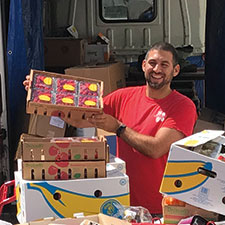
Based on Long Island, Community Solidarity rescues food from being wasted at supermarkets and farms and distributes it to people at food shares across four locations on Long Island and one in Bedford-Stuyvesant, Brooklyn. Each area, he says, is at risk of being a “food desert,” where fresh, nutritious, affordable food is hard to find.
“We rescue food waste because it’s common sense—it’s cheap to do it. But on a more philosophical level, on a more economic level, this is why people in our communities are struggling. We see it as a fundamental problem in our system that’s making people in our community poor and hurting people overseas and also destroying our environment by producing large quantities of stuff that we don’t need,” he said.
“We’re trying to rescue a small portion of that waste and repurpose it for something good, like feeding our neighbors, but we’re also trying to expose the problem.”
Stepanian knew he wanted to focus on helping local communities after graduating from Fordham. As an undergraduate, he studied history and political science—and an internship at the United Nations and a stint working at the American Civil Liberties Union gave him perspective on working within the intergovernmental and nonprofit sectors. Shortly after college, he and his friends started a Food Not Bombs chapter on Long Island, occasionally setting up a food distribution table on weekends.
Before long, he realized he needed to create a more sustainable structure to keep the food distribution going. Community Solidarity, with its 501(c)3 nonprofit status, was born out of this realization, although Stepanian said that a nonhierarchical structure was important from the outset.
“When we decided to become a nonprofit, we said we wanted no lines of demarcation between who can volunteer and who can get food,” he said. “We wanted to make it so you wouldn’t be able to tell if someone’s volunteering or in need or both.”
In a 2018 TEDxNYU talk, Stepanian talked about what he called “the myth of scarcity,” and how a communal response can not only address hunger but also help to create a deeper sense of belonging among neighbors.
“We’re also trying to raise awareness by saying that we will, in 10 years, be the largest hunger relief organization in the country, and we’re doing it for a thousandth of the price that the food banks are doing it, all because of this waste,” Stepanian said.
“This is how abundant that system of waste is. We want to make it eye-opening for people.”
—Adam Kaufman, FCLC ’08
A Familiar Face Offers Financial Literacy Training to Fellow Women of Color
As a young woman growing up in Brooklyn, Felicia Gomes-Gregory knew she wanted two things: to attend Fordham University and to work as a computer scientist. She achieved both.
But now, more than 30 years later, Gomes-Gregory is focused on something new, which she calls her passion project: Heels and Higher Achievement, a nonprofit that empowers women and people of color by helping them learn about finance.
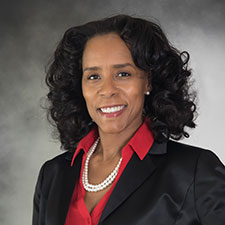
Her path to forming the nonprofit started in 2016, when she received what she calls a blessing in disguise. After a decades-long career at various financial firms in New York City, she was laid off from Neuberger Berman, an employee-owned investment management firm.
She asked herself what she would do next. “In my heart, I’ve always wanted to … get more women involved in technology or finance, and especially women of color, because I never saw anybody that looked like me—or not enough of it,” Gomes-Gregory said.
She kicked off Heels and Higher Achievement (HHA) in 2018, determined to make financial literacy fun while giving a voice to those in her community who are empowering young women in tech, finance, STEM, media, or “whatever it is that they want to do,” she said. “I wanted to create a forum so that people can speak, but mainly speak about financial education.”
That first year, she conducted in-person workshops at schools, churches, and “anywhere anyone would hear me,” Gomes-Gregory said. She’d speak about basic financial literacy concepts and invite people to schedule a complimentary financial review—a kind of “GPS of your money,” she said, “to make sure you can stop working for money at some point and [let]money work for you.”
She also launched an ambassador program to give young girls opportunities to network with professionals and serve their communities through volunteer work. But COVID-19 meant pivoting to online events and workshops in 2020.
In April, HHA sponsored its second annual series of online workshops for Financial Literacy Month, including, for the first time, programming for men. “[Because] of all of the things that were happening in the Black community— between George Floyd, the social issues, COVID—men need to talk, too,” she said.
The digital programming has gone well, she said. She’s hoping to launch a YouTube channel and resume in-person events soon.
“I’m learning that self-care and self-preservation—from a financial, physical, mental, and spiritual [standpoint]—are so very important,” she said. “And I didn’t learn this until I was 50. So, now I’m teaching all of the young ’uns. ‘Take care of yourself first. You’re important.’”
—Sierra McCleary-Harris
Students Share Their Expertise with Bronx Businesses
When the pandemic upended everything in March 2020, Rich Shrestha was working on a research project about consumer behavior in the Bronx. As the economy went into a tailspin, his mind went back to his childhood in New Haven, Connecticut, where his father ran a Subway franchise for a decade.
“I saw him always grinding away every day, putting in 12-hour days. So, I can sympathize with the small business owners who are trying to survive in the age of COVID,” he said.
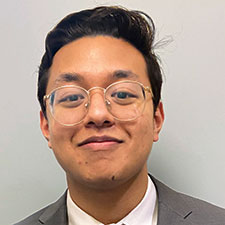
Shrestha, a rising senior majoring in economics at Fordham College at Rose Hill and a member of the University’s Social Innovation Collaboratory, reached out to friends he thought might be interested in helping small businesses.
Diontay Santiago, then a senior majoring in marketing at the Gabelli School of Business, was one of those who answered the call. In June 2020, they launched the Fordham Business Development Collaboratory. The student-run group, comprising more than 70 members, is split into teams that assist clients with finance, marketing, compliance, technology, and communications. Students offer their advice free of charge, relying on lessons they’ve learned in classes. They also conduct research, develop industry reports, and create case studies and videos for Bronx businesses.
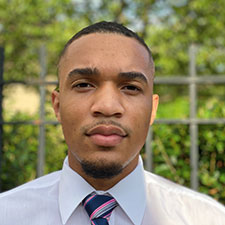
For Santiago, who graduated from Fordham in May and had served as president of ASILI, the Black Student Alliance, the group has been a way to lift up the borough he has called home his whole life. “Doing this sort of thing weds the school to its actual geographic location and allows it to give back to the community it’s inhabited for the last two centuries or so. So when Rich presented me with the opportunity to work with him, I jumped at it.”
The group’s clients have included restaurants, nonprofits, a software company, and an insurance firm. In addition to word-of mouth and its website (fordhambdc.org), the group has connected with clients through the South Bronx Overall Economic Development Corporation.
Sadibou Sylla, the interim director of Fordham’s Social Innovation Collaboratory and an adjunct professor at the Gabelli School, said that all who contribute to the group personify what it means to be a “changemaker.”
“They understand that it is only in serving all that we serve ourselves,” he said, “and that business is nothing but an instrument for helping society.”
Shrestha is optimistic that the group will live on long after he and his classmates graduate.
“This is an opportunity to gain an understanding of the community you’re in, and how we can be a better part of it and better neighbors,” he said. “I think a lot of students are starting to realize how important that is.”
—Patrick Verel, GSAS ’15
Do you know a Fordham “Changemaker”?
Who are the unsung Rams working to foster collaboration and change in your community? Tell us about the people whose stories you’d like us to share. Write to us at [email protected].
Cain said that her coaches forced her to lose weight, which led to the loss of her period for three years and stress-related injuries, including five broken bones.
“You don’t go from losing weight to breaking bones in two days, right? There’s usually this long period of time where there’s this physical deterioration,” said Cain, GABELLI ’19, at Fordham’s ninth annual Sports Business Symposium, held virtually on March 25. “Throughout the day, I just was more prone to having silly things, like headaches, to just being more hungry, to being a little bit more irritated as a result, and to just being visibly fatigued.”
She began to dread the sport she had loved since she was in fifth grade, when she surprised her gym teacher by running a mile in 6:10. Her physical, emotional, and mental health began to spiral—she developed an eating disorder and began to cut herself and have suicidal thoughts.
“What once had been something that came naturally [to me], this beautiful experience … suddenly became a slog,” Cain said. “So often, I think, as people, we like to separate our physical, emotional, and mental well-being into separate categories, but they’re so symbiotic, and the longer that I was in this really circular system, the more my body broke down.”
The Nike Project
Before she joined the Nike Project, a team of the fastest athletes in the world, Cain had a decision to make—compete in college or go pro right away. She said she felt going pro through the Nike Project would allow her to attend college and get a strong academic foundation while pursuing running. She moved from Bronxville, New York, to Oregon and completed one year at the University of Portland before transferring to Fordham University’s Gabelli School of Business, where she earned a bachelor’s degree in 2019. After she moved back to New York, Cain kept training with the Nike Project until she left for good in 2016.
In a November 2019 video piece for The New York Times, Cain said the all-male coaching staff led by Salazar did not include a certified sports psychologist or certified nutritionist, and that Salazar had tried to put her on birth control pills to lose weight, and harmed her mental health by berating her and humiliating her in front of her fellow athletes.
“Women in sports are treated harsher when it comes to body image,” she said during the Fordham symposium. “And I believe the reason is mostly societal—the expectation to be a lighter weight is more attached to [women’s] looks [and]their meaning. And it’s this really toxic culture that I think permeates professional sports in a way where weight still matters for men, but the dialogue is different.”
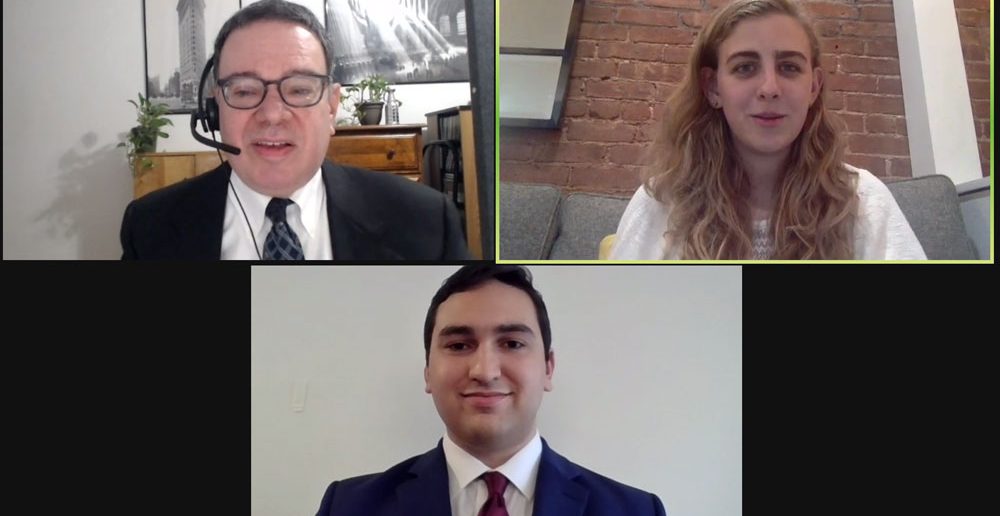
Starting a Conversation, Advocating for Reform
After Cain’s story came out, many other female athletes spoke up and supported her claims, including Kara Goucher, an Olympic distance runner who had trained under the same Nike program. Salazar denied the allegations of abuse, but several weeks before Cain’s story was published, he had received a four-year ban from the sport for doping violations, and Nike had already shut down the Oregon Project.
In January 2020, Nike completed an internal investigation of Cain’s allegations of abuse, and her story helped Nike identify initiatives to “do better in supporting female athletes,” including increasing the number of women coaches in sports and investing in scientific research into the impact of elite training on women and girls.
That same month, the U.S. Center for SafeSport, a nonprofit organization focused on ending all forms of abuse in sport, placed Salazar on its “temporarily banned list, a disciplinary action that could result in a lifetime ban,” according to The New York Times.
Cain said her goal in sharing her story is to make sure that no other athletes, particularly female athletes, have to go through the suffering she did.
“I hadn’t known that the situation was bad until somebody [came out and told me], ‘That is bad. That shouldn’t happen to you.’ It’s normalized,” she said. “I realized I didn’t want any other person out there to … be self-loathing, beat themselves up, and have this just incredibly negative experience, because they were under an emotionally abusive coach, and almost didn’t know it.”
Cain has called for reforms to the sport. In addition to hiring more women coaches, which Nike has pledged to do, she would like to see teams provide more support for young athletes, such as mental health counselors and trained sports psychologists who are separate from the coaching staff. She also thinks coaches should undergo more training to be certified to work with young athletes.
“I think [U.S. Center for SafeSport] programming is trying to change that and really show how somebody who’s going into coaching is going to be working with traditionally very vulnerable, younger people who are in need of a mentor and a leader,” she said. “And so the more education that you can give yourself to be that for a young athlete is important.”
Moving Forward
Cain has also called for changes in how athletes make a living in the sports world. Right now, many pro runners and other athletes competing in Olympic sports are paid as independent contractors.
“We make our money through sponsorship … and as a result, we’re really just singular athletes floating in the sea, trying to advocate for ourselves. And I believe what would be most beneficial is if there was one organization, that if we are going to be representing Team USA, we are all employees of [that organization].”
Cain currently works full time for Tracksmith, a running apparel company, as an employee and an athlete. In her role as the company’s New York City community manager, she’s in charge of developing relationships with teams and organizations in the city. She also still runs professionally as a member of USA Track & Field, and works part time for the nonprofit New York Road Runners.
Cain said that her working relationship with Tracksmith allows her to be an athlete and a full-time employee, which makes her eligible for benefits, such as health insurance and maternity leave, that she wouldn’t have had as an independent contractor.
“Our athletic dreams and careers are fully supported,” she said. “We’re encouraged to train hard. We’re encouraged to travel. We’re encouraged to do everything that is within our means to be the best athletes that we can be.”
Cain said this experience has been “incredibly rewarding” because it allows her to not only develop as an athlete but also as a sports business professional.
A Look Across the Sports Business Industry
The event also featured a talk from Tim Hinchey, the president and CEO of USA Swimming and the USA Swimming Foundation, and a panel on disruptors in sports media.
Other panels focused on some of the latest trends in sports business in partnerships, communications, and community relations, as well as how the COVID-19 pandemic impacted their organizations.
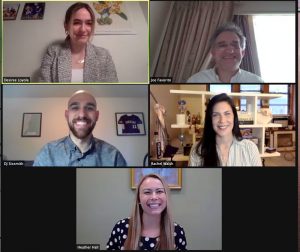
The communications and community relations panel featured Fordham alumni Joe Favorito, FCRH ’85, who works as an independent sports, entertainment, and branding consultant, and DJ Sixsmith, FCRH ’15, the social media manager and host at CBS Local Digital Media, along with Heather Hall, a senior director of community relations at BSE Global, which operates the Barclays Center, and Rachel Walsh, vice president of communications at Excel Sports Management.
The partnerships panel featured Fordham alumni Mary Beth Gambke, GABELLI ’13, director of partnership marketing at Barstool Sports; Terry Tsouratakis, FCRH ’11, director of corporate partnerships for the Los Angeles Football Club; and Mark Gennarelli, GABELLI ’2002, director of corporate partnerships for the New York Giants; as well as Stephanie Maes, director of sports partnerships for MGM Resorts International, and Steve Olwell, director of corporate partnerships for the New York Racing Association.
For Nicholas Lehman, a Gabelli School of Business senior majoring in marketing and serving as president of the Sports Business Society, this year’s symposium took extra planning, but it was an opportunity to reach a broader audience.
“We had prepared for months on last year’s symposium, which was canceled just three days before we were due to host it” on campus, Lehman said. “This year, we [hosted]the symposium virtually for the first time in our history. We were excited to make this year’s event the largest and most wide-reaching event we have ever hosted, making it a truly national event with speakers and attendees from around the country.”
]]>